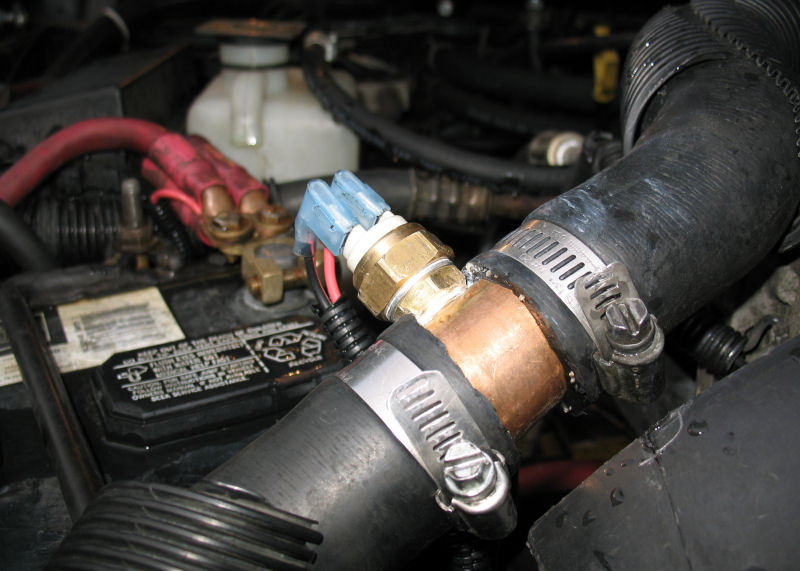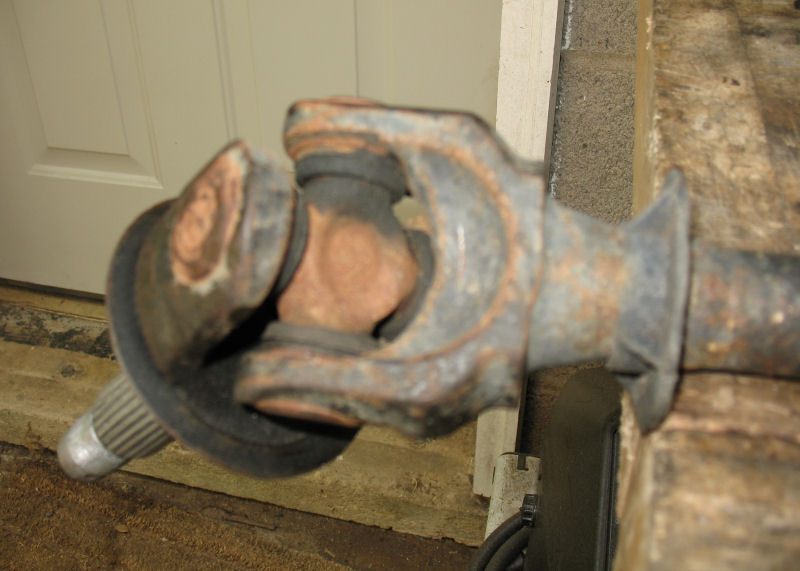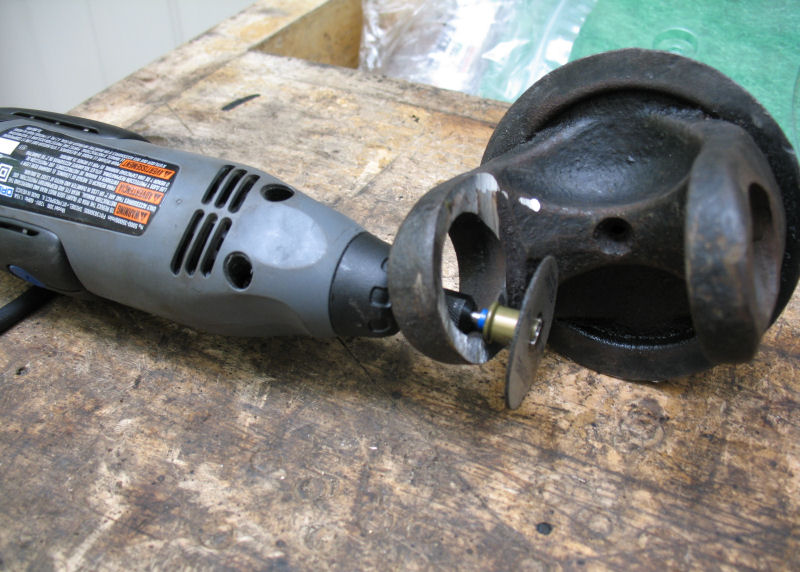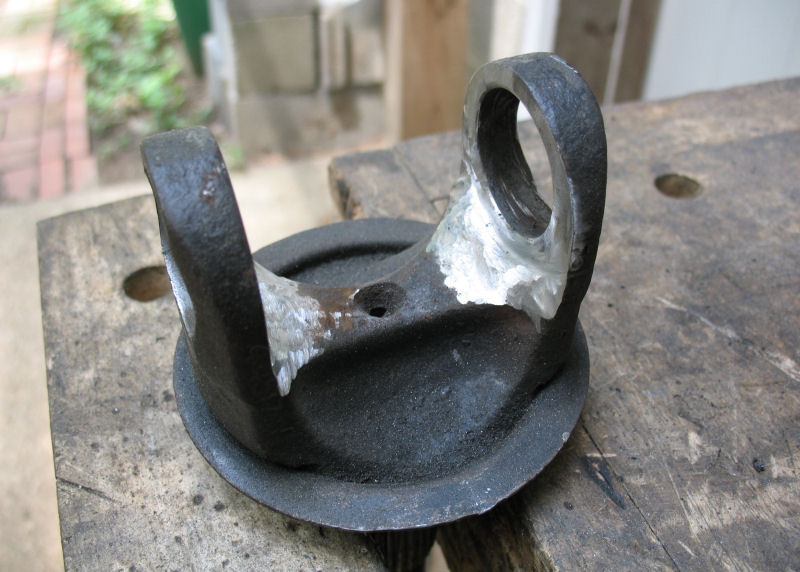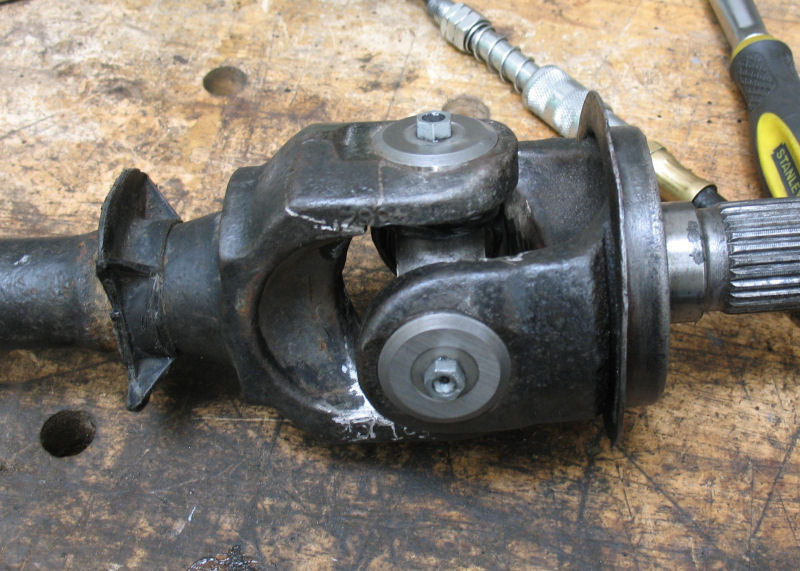- Location
- Southern Maryland
Got some extra coins so did some work to get the beater a little smoother and quieter. First was to replace the rear u-joints and reinstall the YJ slip yoke. I was afraid it would be too long with the 8.25 driveshaft (on my D35 yoke) but it sets up fine and the ride is much much smoother. There is still a hair bit of vibes when I reverse quickly, which is due to the pinion turning down I suppose. Not much to worry about (I don't do much racing in reverse) and not much that can be done about it so whatever.

After that I replaced the u-joints and centering ball on the front driveshaft too. I thought they were probably originals but after I got the parts cleaned up I found junkyard paint marker on it, so I guess it's something else that my brother broke. The front parts were pretty nasty and one of the joints had a broken spacer ring in the cap, but it all cleaned up well. The new centering ball is greasable too, which is another plus. I need to find low-profile needle fittings to use instead of the zerks that came with the u-joints but for now it's installed and working, and the jeep got smoother and quieter again.

Also got two new tires for the front to replace the cupped and cracking BFG ATs. I had planned to run the used ones until I got the axles swapped but the economy isn't improving quickly enough for that so I had to do something. I looked for two more Dunlop Radial Rover RVs to match the ones in the rear that are still good, but the RV is discontinued and the replacement models don't have the same tread pattern. Looking around I found the Goodyear Wranger GS-A was almost identical (Goodyear maybe owns Dunlop?) but it was also discontinued. I was going to punt and get a couple of Grabber AT2 (I loved the Grabber AW set I had before) but found these Delta Sierradial AT locally which is a Cooper knock-off like the Definity tires that Pep Boys sells. The tires are soft and feel good on the road so far, and $300 even for the pair of them installed so that's a pretty good deal if they don't explode on the highway. Anyway ride is smoother and quieter once more so it's an improvement.

I still need to replace the axle u-joints with greasable ones since I still hear some whistling going down the road, but otherwise I am about done with the suspension work until I can replace the axles entirely. Assuming the ball joints don't blow out anyways

After that I replaced the u-joints and centering ball on the front driveshaft too. I thought they were probably originals but after I got the parts cleaned up I found junkyard paint marker on it, so I guess it's something else that my brother broke. The front parts were pretty nasty and one of the joints had a broken spacer ring in the cap, but it all cleaned up well. The new centering ball is greasable too, which is another plus. I need to find low-profile needle fittings to use instead of the zerks that came with the u-joints but for now it's installed and working, and the jeep got smoother and quieter again.

Also got two new tires for the front to replace the cupped and cracking BFG ATs. I had planned to run the used ones until I got the axles swapped but the economy isn't improving quickly enough for that so I had to do something. I looked for two more Dunlop Radial Rover RVs to match the ones in the rear that are still good, but the RV is discontinued and the replacement models don't have the same tread pattern. Looking around I found the Goodyear Wranger GS-A was almost identical (Goodyear maybe owns Dunlop?) but it was also discontinued. I was going to punt and get a couple of Grabber AT2 (I loved the Grabber AW set I had before) but found these Delta Sierradial AT locally which is a Cooper knock-off like the Definity tires that Pep Boys sells. The tires are soft and feel good on the road so far, and $300 even for the pair of them installed so that's a pretty good deal if they don't explode on the highway. Anyway ride is smoother and quieter once more so it's an improvement.

I still need to replace the axle u-joints with greasable ones since I still hear some whistling going down the road, but otherwise I am about done with the suspension work until I can replace the axles entirely. Assuming the ball joints don't blow out anyways



